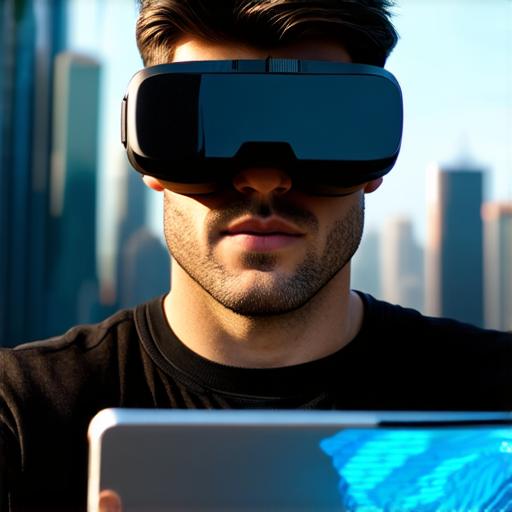
What sets augmented reality apart from virtual reality?

In recent years, augmented reality (AR) and virtual reality (VR) have been increasingly popular, but what sets these two technologies apart? While both AR and VR involve immersing users in a digital environment, there are several key differences that make them distinct. In this article, we will explore the main differences between AR and VR, including their unique features, applications, and user experiences.
One of the biggest differences between AR and VR is how they interact with the real world. AR adds digital elements to the real world, allowing users to see and interact with virtual objects in their physical surroundings. This means that AR is often used for practical purposes, such as in education or training, where users need to learn or practice skills in a realistic environment.
VR creates a completely immersive experience by replacing the real world with a digital one. In VR, users wear headsets and are fully immersed in a virtual environment, often through motion tracking or controllers that allow them to move and interact within the virtual world. This makes VR ideal for entertainment and gaming, as well as for more creative applications such as designing and visualizing products.
Another key difference between AR and VR is in their respective applications. AR has a wide range of potential uses, from enhancing customer experiences in retail to improving medical diagnosis and treatment. For example, AR can be used to overlay digital information on physical objects, such as furniture or vehicles, allowing users to see how they would look or function in different scenarios.
In contrast, VR is typically used for more specialized applications, such as gaming, training, and visualization. For instance, VR is often used in the military to train soldiers for combat situations by simulating real-life scenarios in a controlled environment. Similarly, in the construction industry, VR can be used to visualize complex building designs and make changes in real time, saving time and reducing errors.
Finally, the user experience of AR and VR differs significantly. AR is generally more accessible and user-friendly, as it does not require any special equipment or training to use. Users can simply point their smartphones or tablets at a physical object, and the AR software will overlay digital information on top of it. This makes AR ideal for everyday use, such as in shopping or navigation.
In contrast, VR requires users to wear headsets and often involves more complex setup procedures, such as calibrating motion tracking sensors. This can make VR more challenging to use, particularly for those who are not familiar with technology. However, once users become comfortable with VR, the immersive experience can be incredibly rewarding, providing a level of engagement and realism that is difficult to achieve with AR.
In conclusion, while AR and VR both involve immersing users in digital environments, there are several key differences between these two technologies. AR adds digital elements to the real world, making it practical and accessible for a wide range of applications. VR, on the other hand, creates a completely immersive experience that is ideal for more specialized applications. Whether you prefer the practicality of AR or the immersion of VR, both technologies have their own unique strengths and limitations that make them well-suited to different types of use cases.


